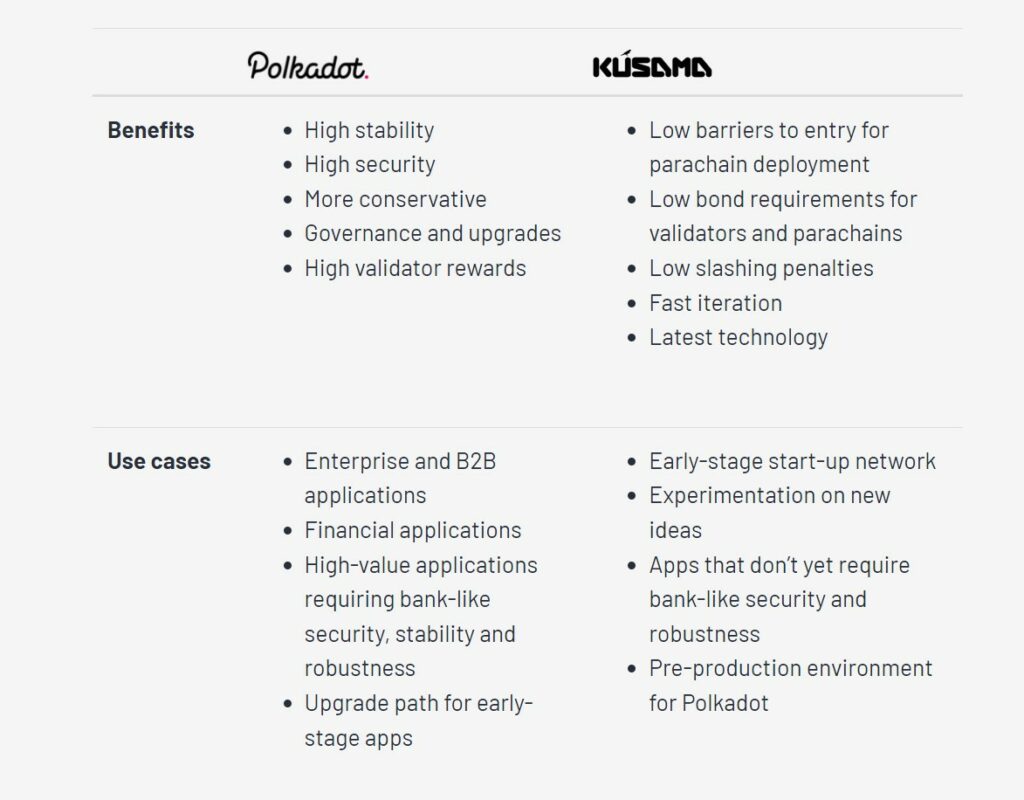Kusama ksm
Summary
Kusama is a permissionless experiential network that acts as a testing ground for developers; a ‘cousin’ of Polkadot. It launched in Aug. 2019 to serve as a pre-production environment for Polkadot upgrades. Distinguishing it from a typical blockchain testnet, the funds used on Kusama.
Distinguishing between Kusama from Polkadot: Kusama has looser governance parameters helping developers to easily change, test and trial their apps. Whereas Polkadot is larger and utilises a governance approach that prioritises security and network stability. Both use Nominated Proof of Stake (NPoS).
Like Polkadot, 2 types of blockchains underpin Kusama:
- The Relay Chain is the main network upon which transactions take place.
- Parachains are individual blockchains running in parallel within the Polkadot ecosystem. These are user-generated networks, with projects able to connect to Polkadot or Kusama via a parachain slot, held via an auction.
Users can participate in auctions via a crowdloan mechanism. Tokens gathered in this way are programmatically returned to the lender after the lease or crowdloan period ends.
Kusama has an on-chain treasury that collects funds from transaction fees or slashing. Users can ask to receive or allocate a portion of treasury funds by submitting a spending proposal.

KSM Token Utility
Kusama’s native token is KSM. KSM has a total supply of 10M, although the maximum supply is not fixed and has an annual inflation rate of 10%. KSM use cases include:
- Governance: Voting on upgrade proposals. Kusama’s governance system features the Referendum Chamber, The Council and The Technical Committee.
- Staking to secure the network. Nominators delegate their staked KSM to validators and allocate their votes to them.
- Bonding for parachains: New parachains are supported by bonding tokens—KSM is required to participate in crowdloans.
- Network operation and fees: KSM is used for network operations and a utility token. It’s also required for parachains to communicate.
Distribution: Initially, KSM was airdropped 1:1 to DOT holders. Of note, Parity Technologies and the Web3 Foundation received 1% of the initial DOT supply.
- KSM was previously publicly available through a highly used faucet, but was decommissioned.
- If the % of staked KSM is >50% of its circulating supply, validators receive all newly minted KSM. If <50% Kusama’s treasury gets a portion of newly minted KSM.
Collective Shift Analysis
To see Collective Shift’s analysis, sign up for our membership!